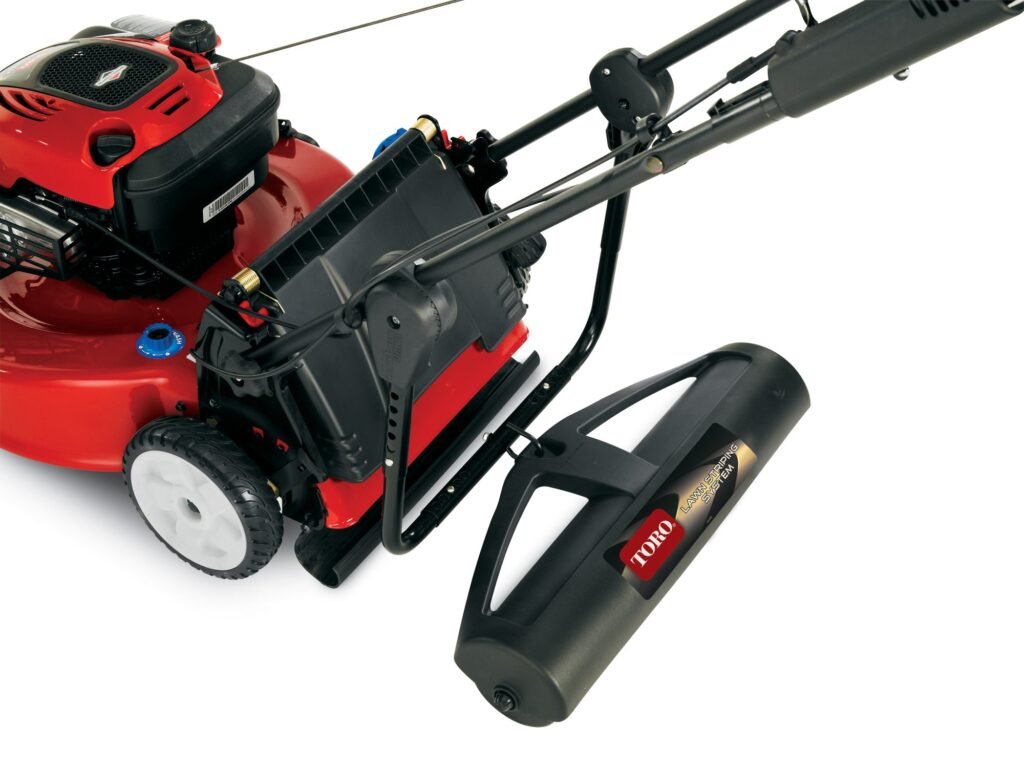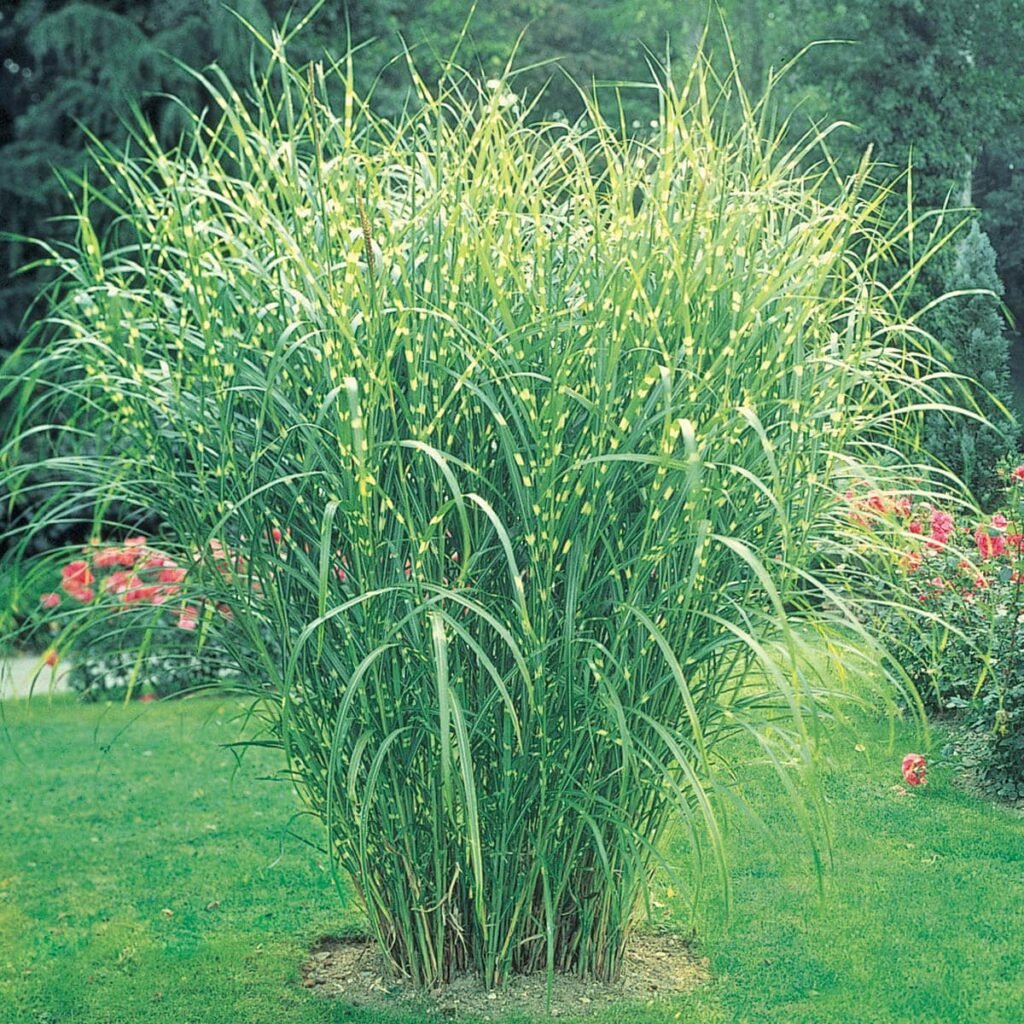Striping your lawn not only adds an aesthetic appeal to your outdoor space, but it also promotes healthier grass growth. The technique involves cutting grass at different heights to create visually stunning and alternating light-dark patterns. Lawn striping can help your yard stand out and even make it appear larger.
To achieve these coveted stripes, you’ll need to use the right mowing equipment and technique. There are several fundamental patterns to consider, ranging from basic parallel lines to checkerboards or even more complex designs.
Key Takeaways
- Lawn striping enhances curb appeal and promotes healthy grass growth.
- Achieving stripes requires proper mowing equipment and techniques.
- Choose from basic to complex patterns for customized and stunning lawn designs.
How Are Lawn Stripes Created?
Lawn stripes are created by bending the grass blades in opposite directions, which creates a visual contrast by reflecting sunlight differently. The way you mow your lawn determines the direction in which the grass blades bend.
There are two key factors to keep in mind for achieving perfect lawn stripes: the direction of mowing and the height of the grass.
To create straight, even stripes, mow your lawn in a consistent line, turning at a 180-degree angle at the end of each stripe.
It is essential to start your pattern by first mowing a border around the lawn perimeter. This will create a clean edge and also help disguise any turn marks left behind as you mow.
After you have mowed the border, mow the first stripe parallel to it and continue with your desired pattern. Make tight turns at the end of each stripe or raise the mower deck to avoid any noticeable marks.
In conclusion, striping your lawn requires a consistent approach, proper mowing direction, and maintaining the right grass height. By employing these techniques and experimenting with different patterns, you can create an impressive and visually stunning lawn.
How To Achieve Better Looking Stripes
Utilizing A Lawn Striping Kit

A lawn striping kit can greatly improve the appearance of your lawn stripes. These kits are designed to attach to your lawn mower and help bend the grass blades in the desired direction, creating a more defined and attractive pattern.
There are several types of striping kits available for different mower types, including those specifically designed for riding lawn mowers and push mowers. Before purchasing a striping kit, ensure that it is compatible with your mower model.
Optimal Grass Height For Creating Clear Lawn Stripes?
The height of your grass plays a significant role in creating clear lawn stripes. It is recommended to maintain a grass height between 3-4 inches to achieve the best results. Taller grass blades have a better chance of bending and reflecting light, which creates the desired striped appearance.
By utilizing a lawn striping kit, choosing the right lawn striper for your mower, and maintaining optimal grass height, you can enhance the appearance of your lawn stripes and create a professional-looking pattern for your lawn.
Basic Lawn Striping Patterns
In this section, we will discuss three basic lawn striping patterns: vertical, horizontal, and diagonal lawn striping. By understanding these patterns, you can achieve a professionally maintained look for your lawn.
Vertical Lawn Striping

Vertical lawn striping involves mowing parallel lines from one end of the lawn to the other. To create this pattern, start by mowing a border around the lawn perimeter for a clean, finished look.
Then, mow the lawn back and forth in parallel lines, always working from the same side of the lawn each time. As each stripe is created, make sure to lift the front wheels of the mower during turns to avoid overlapping lines.
Horizontal Lawn Striping

Horizontal lawn striping is similar to vertical striping, but the pattern runs across the width instead of the length of the lawn. To achieve this look, begin by mowing a border around the perimeter of the lawn.
After that, mow horizontal lines back and forth along the width of the lawn. Again, it’s essential to lift the front wheels of the mower during turns to avoid overlapping lines. For a criss-cross stripe effect, you can alternate mowing horizontally and vertically each time you mow. More details on this technique can be found here.
Diagonal Lawn Stripes

Diagonal lawn stripes add an eye-catching pattern to your yard. To create this pattern, start by mowing a border around the lawn perimeter. Next, choose an angle at which you want to stripe the lawn and mow back and forth along that angle. Be sure to lift the front wheels of the mower during turns to maintain clean lines.
Here are a few tips for creating diagonal lawn stripes:
- Mowing angle: The steeper the angle, the more dramatic the stripes will appear.
- Parallel lines: Be mindful of keeping the diagonal lines parallel to ensure a visually pleasing pattern.
- Alternate directions: To achieve a checkerboard-pattern, mow diagonally in one direction and then in the opposite direction on your next mowing session.
Although lawn striping requires some practice and attention to detail, these three basic patterns can help you achieve a professional-looking lawn.
Striping Techniques For Better Results
Handling Corners And Boundaries
When striping a lawn, it’s crucial to properly handle corners and boundaries. Start by mowing a border around the lawn perimeter to create a clean edge. This helps achieve a polished appearance and allows for easier transitioning when changing patterns. It will be hard for you to make 180 turns in fenced back yards and next to obstacles.
How To Approach Obstacles While Maintaining Stripes

Advanced Lawn Patterns
Creating a professional-looking lawn with lawn stripes should be fun and somthing you look forward to each week. Consider experimenting with different patterns and designs:
- Checkerboard: Mow your lawn in straight lines, alternating direction with each pass. After completing the runs in one direction, create a checkerboard pattern by striping your lawn again at a 90-degree angle to the first stripes.
- Diagonal: Achieve a diagonal effect by offsetting the stripes at a 45-degree angle. Start by mowing in straight lines and then transition to diagonal paths. This design adds visual interest and an appealing aesthetic.
- Criss-cross: For criss-cross stripes, simply alternate the orientation of your pattern. Mow north-south one time and east-west the next. Consistency in starting direction and line is vital for this pattern.
- Circles: Create circular patterns by beginning in the centre of the lawn and working outward. This unique design adds a touch of creativity and makes your lawn stand out.
Maintaining Lawn Stripes
If you want to maintain the vibrant and visually appealing stripes on your lawn, it’s essential to follow a few key steps. First and foremost, it’s important to mow your lawn regularly and at the right height.
Mowing your lawn too short can make the stripes less prominent, as the effect relies on grass blades lying flat.
Lawn Striping Summary

- Mowing at the right height
- Creating a border around the lawn’s perimeter
- Choosing a pattern and mowing methodically
- Using a lawn striping kit or a reel mower for more defined stripes
- Following proper lawn care practices to maintain overall lawn health
Frequently Asked Questions
Are There Techniques To Stripe A Lawn Without Using A Lawn Striper?
It is possible to stripe a lawn without a roller by varying your mowing direction and using the weight of the mower to gently bend the grass blades. However, the stripes may not be as visible and well-defined as those created using a roller or striping kit.
Remember, leaving the grass a bit longer will help it bend over and reveal the stripes more easily.
How do I stripe a lawn using a riding mower?
Striping a lawn using a riding mower involves attaching a striping kit or roller to the mower’s rear. This involves some handy skills and modifications your mower.
Can DIY tools be effective for striping a lawn?
DIY tools like a homemade lawn roller or weighted device can be somewhat effective for striping a lawn. However, the results may not be as consistent or attractive as those obtained using a professionally designed striping kit or roller attachment.


